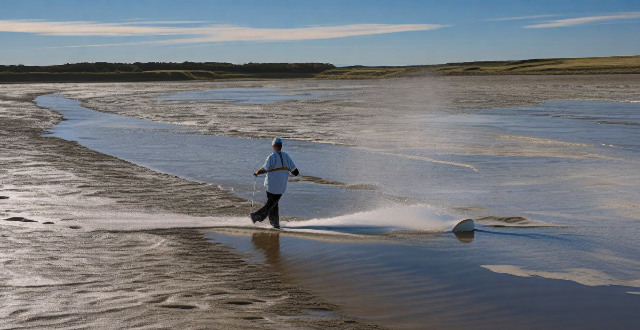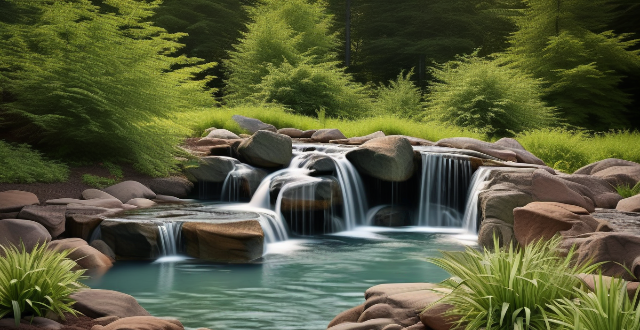Water River

What are the best places to go for white-water rafting ?
White-water rafting is a thrilling outdoor activity that involves navigating through rough waters in an inflatable raft. It requires skill, teamwork, and a sense of adventure. Here are some of the best places to go for white-water rafting: ## North America ### Colorado River, Grand Canyon (Arizona) The Colorado River offers some of the most challenging rapids in North America. The Grand Canyon section is known for its stunning scenery and technical rapids, making it a popular destination for experienced rafters. ### Gauley River (West Virginia) The Gauley River is considered one of the top white-water rafting destinations in the world. It features steep drops and intense rapids, making it suitable for thrill-seekers and experienced paddlers. ### American River (California) The American River is another great location for white-water rafting, with several sections offering different levels of difficulty. The South Fork and Middle Fork sections are particularly popular among rafters. ## South America ### Futaleufú River (Chile/Argentina) The Futaleufú River is renowned for its extreme rapids and beautiful landscapes. It attracts expert rafters from around the globe who come to challenge its powerful currents and massive waves. ### Rio Upano (Ecuador) The Rio Upano offers a unique white-water rafting experience, with crystal-clear waters and lush tropical forest surroundings. It provides a range of rapids suitable for all skill levels, making it ideal for families and beginners. ## Europe ### Zambezi River (Zambia/Zimbabwe) The Zambezi River is home to some of the most iconic white-water rafting spots in Africa. The rapids near Victoria Falls offer an adrenaline-fueled adventure that combines stunning scenery with challenging rapids. ### Tara River (Montenegro) The Tara River is located in the picturesque canyon region of Montenegro. It offers a variety of rapids suitable for both beginners and experienced rafters, along with breathtaking views of the canyon walls and local wildlife. ## Asia ### Kundalika River (India) The Kundalika River is situated in India's Western Ghats region and offers a thrilling white-water rafting experience. The rapids vary in intensity, providing options for both novice and seasoned rafters. ### Mekong River (Laos/Thailand) The Mekong River offers a unique white-water rafting opportunity through remote areas of Laos and Thailand. The journey takes you past stunning landscapes and traditional villages, adding cultural richness to your adventure.

How does a river cruise compare to an ocean cruise ?
River cruising and ocean cruising offer distinct experiences for travelers seeking different kinds of adventures. While both involve traveling on water, the environments, destinations, and activities vary significantly. Here's a detailed comparison: - **Destinations and Itineraries**: River Cruises focus on specific rivers like the Danube or Rhine, offering intimate views of local landscapes and cultures. Ocean Cruises cover vast distances across seas and oceans, visiting multiple countries and ports. - **Ship Size and Capacity**: River Cruises are typically on smaller ships with fewer passengers, creating a more intimate atmosphere. Ocean Cruises operate on larger ships with thousands of passengers and extensive amenities. - **Activities and Entertainment**: River Cruises emphasize cultural immersion and shore excursions. Ocean Cruises provide a wide variety of entertainment onboard, from Broadway-style shows to poolside activities. - **Duration and Pace**: River Cruises tend to be shorter in duration, usually ranging from a few days to a week or two. Ocean Cruises can last anywhere from a few days to several months. - **Cuisine and Dining**: River Cruises often highlight regional specialties and local dishes. Ocean Cruises feature diverse culinary options, from buffets to gourmet restaurants. - **Cost and Value**: River Cruises can be seen as more boutique and exclusive, often coming with a higher price tag due to their personalized service. Ocean Cruises offer a wide range of pricing, from budget-friendly to ultra-luxury.

In what ways do dams and reservoirs affect downstream water ecosystems ?
Dams and reservoirs significantly alter downstream water ecosystems by changing water flow, trapping sediments, disrupting nutrient cycles, fragmenting habitats, and affecting biodiversity.

How can climate services be used to manage water resources effectively ?
Climate services play a critical role in water resources management by providing accurate and timely information on weather patterns, climate change, and related phenomena. These services can be used to forecast precipitation, monitor river levels for flood early warning systems, assess the impact of climate change on water availability, plan adaptation measures, monitor drought conditions, manage water quality, and protect ecosystems. By leveraging these services, we can ensure the effective use of water resources, adapt to changing climates, prepare for extreme weather events, and guarantee a sustainable water supply for future generations.

How does climate change impact water resource management ?
Climate change significantly impacts water resource management by altering precipitation patterns, increasing evaporation rates, and changing runoff patterns. These changes lead to more variable rainfall, prolonged droughts or intense flooding, reduced snowpack, and earlier spring runoff, among other effects. To adapt, strategies such as water conservation, infrastructure upgrades, integrated planning, ecosystem restoration, and improved monitoring and forecasting are essential for ensuring sustainable water resources amidst a changing climate.

How do different countries approach flood control and management ?
Flood control and management strategies vary across different countries, influenced by factors such as geographic location, climate conditions, economic resources, and technological advancements. The United States relies on early warning systems, flood insurance programs, and floodplain zoning regulations. The Netherlands invests in flood barriers and dikes, water management policies, and international cooperation. China focuses on the Three Gorges Dam, flood prevention campaigns, and reforestation efforts. India adopts community-based approaches, integrated water resource management, and disaster risk reduction programs.

How does deforestation contribute to water cycle disruption ?
Deforestation contributes to water cycle disruption through soil erosion, surface runoff, and groundwater depletion. This leads to droughts, flooding, pollution, water scarcity, and climate change. Sustainable forest management is crucial to mitigate these effects.

How effective are large-scale water transfer projects in alleviating water scarcity ?
Water scarcity is a global issue, and large-scale water transfer projects aim to alleviate it by transporting water from areas with abundant resources to those with scarce ones. These projects can increase water availability, diversify water sources, and provide environmental benefits such as restoring depleted aquifers and wetlands. However, they also face challenges like high costs, negative environmental impacts, and social and political issues. To maximize the benefits of these projects while minimizing their drawbacks, careful consideration of their potential consequences and involvement of all relevant stakeholders in the decision-making process are essential.

How can we improve water resource management in our community ?
The article discusses the importance of water resource management in our community and suggests various strategies to improve it. These include raising awareness through educational campaigns, implementing water-saving measures like fixing leaks and using low-flow fixtures, upgrading infrastructure such as wastewater treatment plants, promoting sustainable practices like xeriscaping and green roofs, and fostering collaborative efforts among different stakeholders. By adopting these approaches, we can ensure the long-term availability of clean water while protecting the environment.

What are the top heritage sites to visit in your country ?
China is home to many heritage sites that are worth visiting. Here are the top ones: 1. Great Wall of China - A series of fortifications built along an east-to-west line across the historical northern borders of China. 2. Forbidden City - A palace complex in the heart of Beijing, home to 24 emperors from the Ming and Qing dynasties. 3. Potala Palace - A palace complex in Lhasa, Tibet Autonomous Region, that served as the residence of the Dalai Lamas until 1959. 4. Terracotta Army - A collection of terracotta sculptures depicting the armies of Qin Shi Huang, the first Emperor of China. 5. Li River and Karst Mountains - Located in Guilin, Guangxi Zhuang Autonomous Region, known for its stunning natural beauty characterized by crystal-clear rivers and towering limestone peaks.

What are the most common types of renewable energy sources ?
Renewable energy sources are naturally replenished and provide a sustainable way to generate power without depleting the Earth's natural resources or contributing to climate change. Solar energy is harnessed through photovoltaic systems, solar water heaters, and concentrating solar power. Wind energy is captured by onshore and offshore wind turbines. Hydropower is generated through dam-based and run-of-river systems. Geothermal energy is tapped into via dry steam, flash steam, and binary cycle power plants. Bioenergy includes biomass combustion, anaerobic digestion, and biofuels. These sources offer clean alternatives to fossil fuels and play a crucial role in reducing greenhouse gas emissions.

How does climate change affect water resources and availability ?
Climate change affects water resources and availability through melting glaciers, changes in precipitation patterns, sea level rise, increased evaporation rates, and impacts on ecosystems. These impacts can lead to water scarcity, flooding, contamination of freshwater sources, and declines in biodiversity. To mitigate these effects, it is important to reduce greenhouse gas emissions and implement adaptation strategies such as improved water management and conservation measures.

How can we balance economic development and water resource protection ?
Water resources are crucial for economic development but must be protected to ensure sustainability. Strategies for balancing these goals include prioritizing sustainable practices, implementing regulatory measures, fostering collaboration and partnerships, investing in infrastructure and technology, and educating and creating awareness. By adopting these approaches, we can achieve a balance between economic growth and water conservation, ensuring long-term sustainability for all.

What are some effective strategies for teaching water safety to children ?
Water safety is an essential skill that every child should learn, especially during the summer months when they are more likely to be around water. Here are some effective strategies for teaching water safety to children: Start early, set clear rules, use visual aids, practice makes perfect, role playing, stay close and supervised, teach risk assessment, and be a good example.

How can I reduce my electricity and water bills ?
To reduce electricity and water bills, one should switchTo reduce electricity and water bills, one should switch, adjust habits like turning off install water-saving fixtures, change bathroom habits, optimize garden watering, and be efficient with laundry and dishes.

How does climate change affect the quality and availability of drinking water ?
This article discusses the various ways in which climate change affects the quality and availability of drinking water, including changes in precipitation patterns, melting glaciers, sea level rise, temperature increase, extreme weather events, and wildfires. It also explores adaptation strategies such as water conservation measures, infrastructure improvements, protection of water sources, and policy and regulation to mitigate these risks and ensure a sustainable water future for all.

How do I overcome my fear of water and learn to swim ?
Overcoming a fear of water and learning to swim is a process that requires patience, persistence, and the right approach. Here's how you can do it: identify the source of your fear, gradually expose yourself to water, find a supportive instructor, start with basics in shallow water, progress slowly, use relaxation techniques, set realistic goals, celebrate small victories, join a swimming group or class, and always prioritize safety.

What are some tips for reducing water consumption at home ?
Reducing water consumption at home can be achieved through various methods, including fixing leaks, installing water-saving fixtures, using efficient appliances, changing habits, being smart with gardening, and monitoring usage. By checking for drips, tightening fixtures, upgrading to low-flow toilets and showerheads, using Energy Star washers and dishwashers, turning off the tap while brushing teeth or shaving, watering the garden in the morning, and regularly reading the water meter, households can save money on utility bills and contribute to a more sustainable environment.